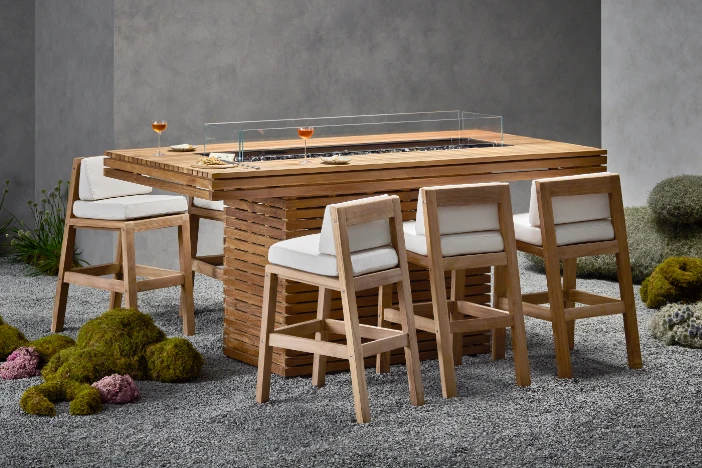
Fire Pit Tables – Captivating & Practical
Can you imagine the joy of gathering around a warm, crackling fire on a chilly evening on your patio? Or, better yet, on a tabletop fire pit installed on your balcony? With a fire pit table, this cozy scenario becomes an everyday reality. These fires are the ultimate game-changers for any outdoor space, blending functionality with an undeniable allure.
They’re not just about warmth, though they include a burner for easy ignition or a recess for raw materials. They also have a lawn-friendly design and can set the mood. Their unique characteristics create an ambiance and a focal point for your patio. This guide covers everything you need to know to choose the perfect fire pit table for your outdoor space. So get ready for some serious backyard envy! Scroll to the bottom of this page or look at the sidebar to view the guide sections. But first, we’ll provide a little background and overview.
Fire Table Statistics
- Per a survey published in 2023, roughly 72% of homeowners consider a fire pit table an essential feature in their outdoor living space
- The Outdoor Furniture Retail Association reports that sales for outdoor fire pit tables have increased by more than 45% from 2020-2023
- Data from an online retail analytics firm shows propane gas fire pit tables with the highest market share at around 60%, followed by wood-burning fire tables and dual heat models
Benefits of Firepit Tables
As temperatures drop and nights get colder, nothing is more inviting than the warm glow of a fire. Adding a fire pit table to your patio or balcony will transform it into a cozy space to enjoy year-round. Fire pit tables provide warmth on cool nights and create an inviting ambiance for outdoor gatherings. Poolside fire tables are especially mesmerizing as the flickering flames reflect off the water.
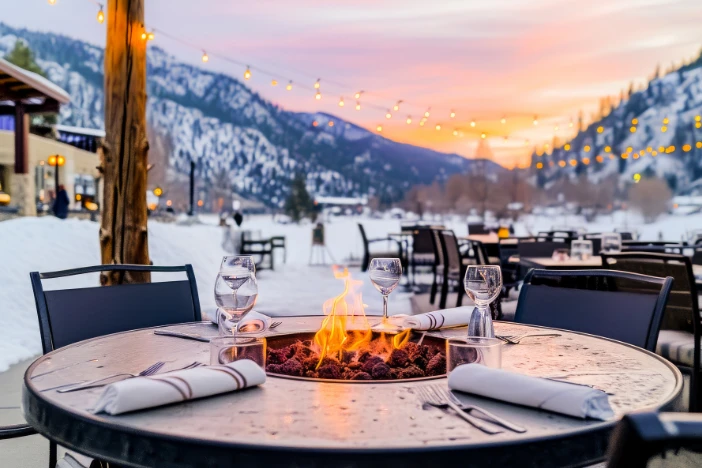
Use Your Fire Pit Table Year-Round
A major benefit of fire pit tables is that they extend the timeframe you use your outdoor space. Wouldn’t it be nice to enjoy your deck beyond the Summer months or into the evening? The warmth emanating from the fire will bring family and friends together for hours-long conversations around the fire.
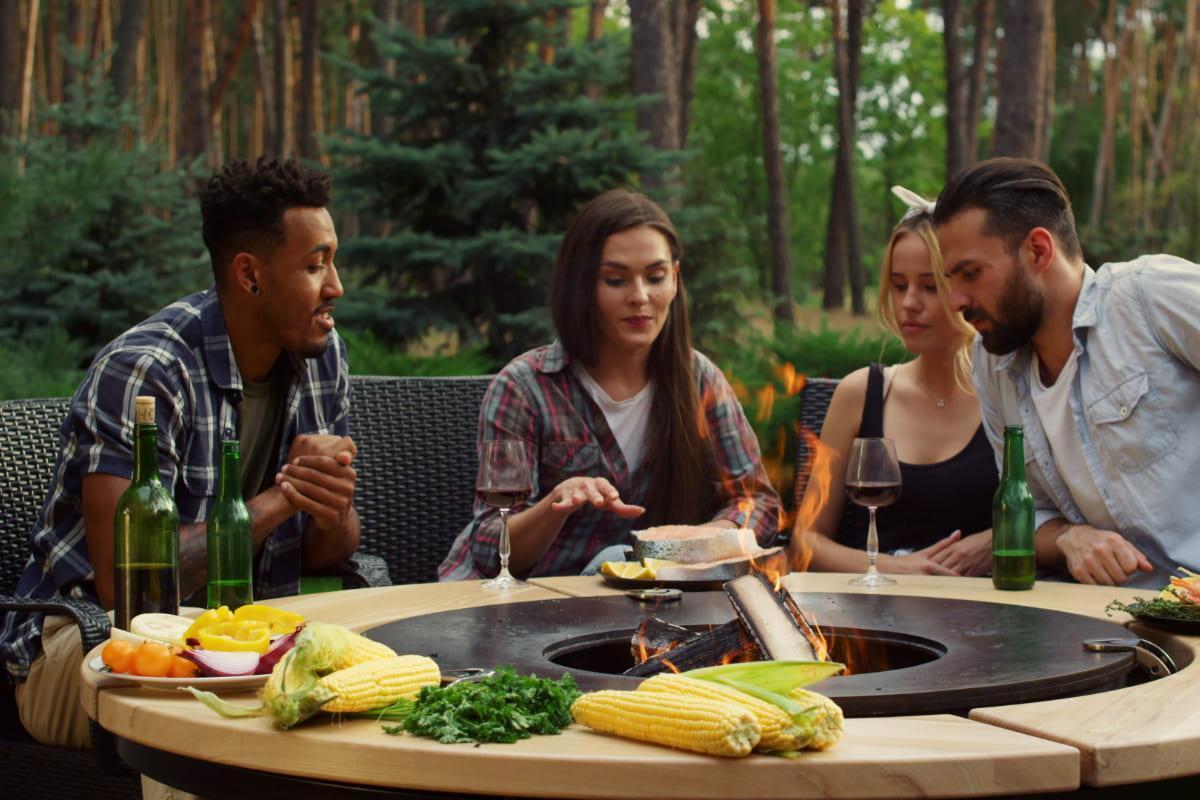
Enjoy More Fresh Air with a Fire Table
Since most people spend their days inside at work or school, they often miss the surrounding natural beauty. Adding a fire pit table means that they can spend time outdoors relaxing while enjoying fresh air and natural light. Your garden or lawn will become the perfect spot for this outdoor touch of warmth.
Dancing Flames Create Ambiance
Think about how mesmerizing an indoor fireplace is during winter evenings. A tabletop fire pit provides the same captivating atmosphere outdoors. Everyone can gather around it, connect and bond over great conversations. This is essentially transferring the charm of indoor fireplaces to an outdoor setting.
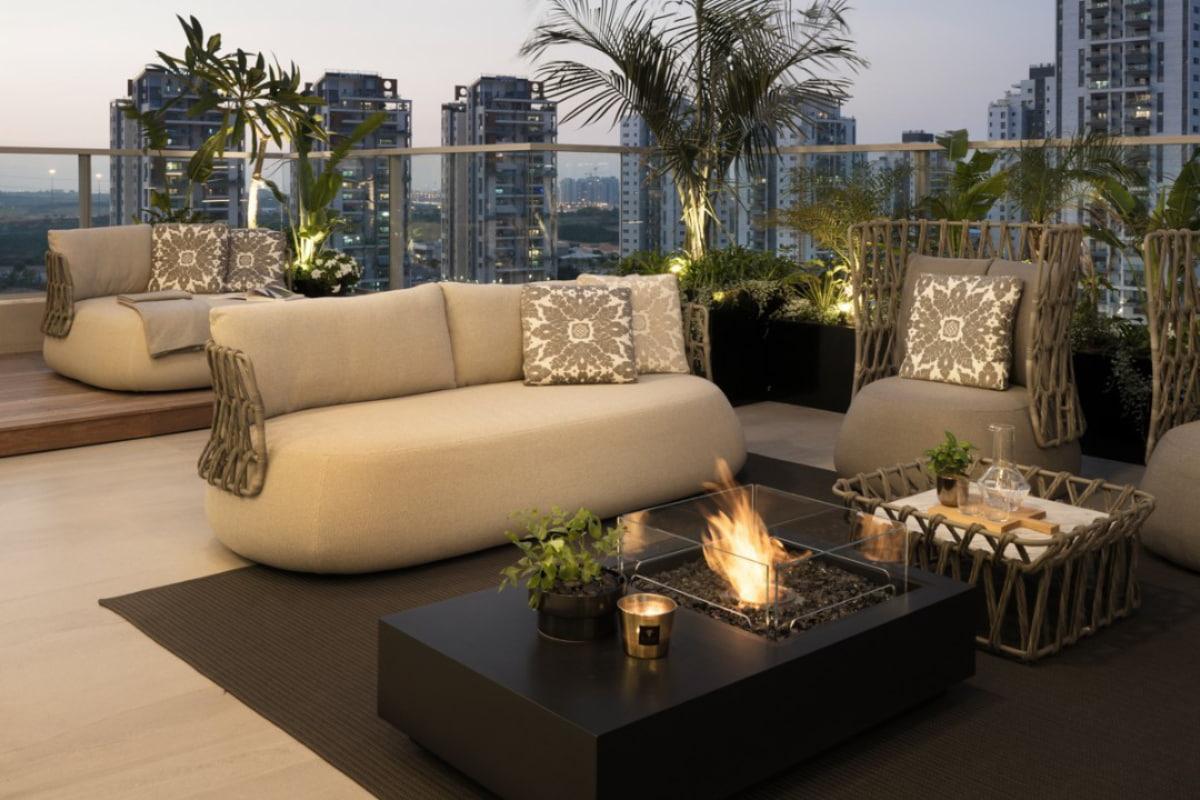
Understanding the benefits fire pit tables provide makes it easier to see why investing in one is an excellent idea. So let’s explore why a fire pit table should be part of your outdoor living design.
Fire Pit Table Functionality
Homeowners wanting functional yet attractive outdoor elements on their patios can install a fire pit table to achieve both goals. There are many reasons why incorporating this fire element into your patio’s layout is essential. Let’s look at some reasons why fire pit tables are such desirable options to add to your living space:
Conveniently Elevated Flames
Unlike traditional fire pits, positioned at ground level, fire pit tables elevate the experience. Their flames are higher and they provide great seating options for small groups while enjoying the warmth of a fire. You can group a few chairs or a bench around the fire pit table giving it a deck party feel. They often function similarly to coffee tables within an outdoor living area. People can place their snacks, drinks, or a cozy blanket on one when gathering.
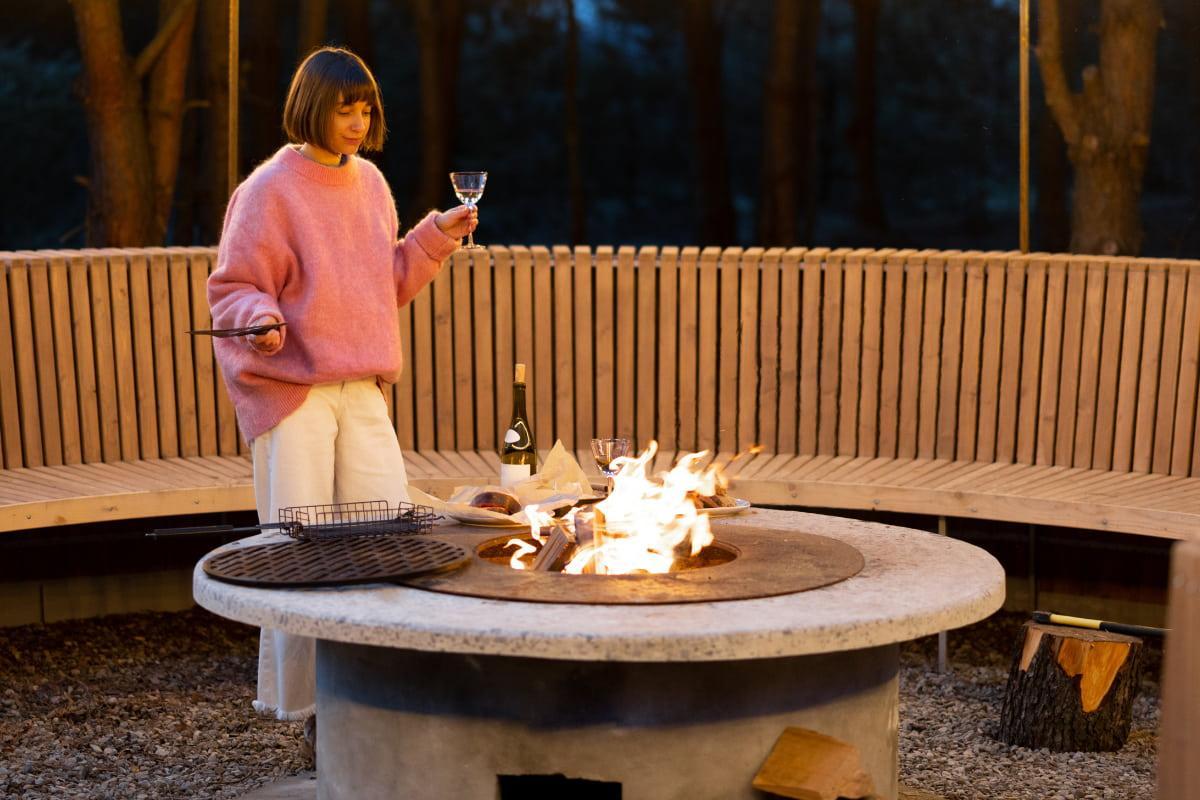
Greater Fire Control
Fire pit tables provide more control over their fires. Most models have adjustable flames that allow you to increase or decrease the heat level. So, you can adapt to suit your guests’ comfort during a party. Additionally, tempered glass windguards prevent sparks from flying out, making it safer for children and pets.
Smokeless Fires Available
Some may argue that a traditional wood-burning fire pit is preferable to a manufactured propane table for an authentic atmosphere. The smell of wood burning is unquestionably pleasant but also risky and getting smoke in your eyes is no picnic. By contrast, propane gas burns cleanly without any smoke, which is better for our environment. Besides, they produce the same heat and light for everyone’s party enjoyment but with a reduced risk of accidents.
What Are You Going to Use Your Fire Table For?
Many of your decisions about a firepit table depend on how you plan to use it. What’s its purpose?
- Warmth – Fire pit tables can heat the area so you can be comfortable outside in cooler weather
- Cooking – Tabletop fires provide an open flame for roasting or grilling meat, fish, poultry and vegetables
- Aesthetics – The glow of flickering flames creates a welcoming ambiance and decorative appeal
Configuring the Ideal Firepit Table
Now that you’ve thought about how you plan to use a fire pit table it’s time to narrow down your choices. A key decision is which fuel to burn. We suggest you read the next section of our comprehensive guide to understand your options and the benefits and drawbacks of each.
Guide Sections
Frequently Asked Questions – Fire Pit Tables
What is the difference between a fire pit table and a regular fire pit?
A fire pit table is a type of fire pit that is designed to be used as a table as well as a fire pit. This type of fire pit is typically larger than a regular fire pit and is designed to be used as a centerpiece for outdoor entertaining. It usually features a table-like surface around the fire pit, which is used to hold food, drinks, and other items.
While some firepits may have edges that are wide enough to accommodate glasses and bottles, that’s not the main purpose of the design. Fire tables have wider surfaces and typically have glass wind shields that also prevent stray hands from accidentally venturing into the flames. Firepit tables frequently have covers that allow you to utilize the entire top when the flame is not ignited.
Most traditional fire pits are relatively low to the ground. Fire pit tables can be used as coffee tables but many models raise the flames to dining or even bar height. This is one of the characteristics that make them ideal for outdoor eating.
What are the benefits of a fire pit table?
A fire pit table is an excellent addition to any outdoor living space. Not only does it provide a warm and inviting atmosphere, but it also has a number of practical benefits. Here are some of the advantages of having a fire table:
- Heat – Most fire pit tables generate sufficient heat to warm you up when the temperature drops.
- Ambiance – A firepit table creates a cozy and inviting atmosphere for outdoor gatherings. The glow of the flames draws attention and bathes your space in warm light.
- Versatility – You can use a fire table’s surface area to set food and drinks, warm your hands by its fire and use its light to illuminate your outdoor space. Taller versions may be used for dining, while many integrate grates and cooking surfaces for barbecuing.
- Eco-Friendly – Some fire pit tables burn environmentally friendly fuels, such as bio-ethanol or natural gas. Seasoned firewood is always an eco-friendly option too.
- Ease of Use – Gas-powered fire tables are a breeze to operate once the gas lines have been safely connected. Ignition switches take away the hassle and minimize the risk of lighting the flame.
- Enhanced Property Value – Adding a fire pit table to your backyard or patio can increase the appeal and value of your home. Since the pandemic, people have a new appreciation for their outdoor living areas and home buyers are increasingly seeking outdoor amenities. Demand for built-in and portable fire tables, pools and spas has increased – boosting home values.

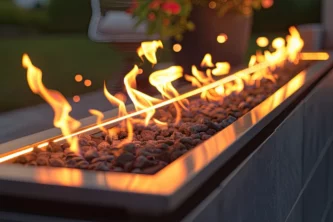
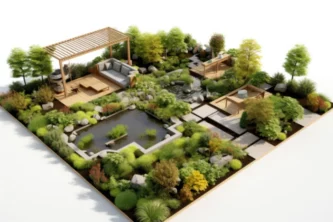
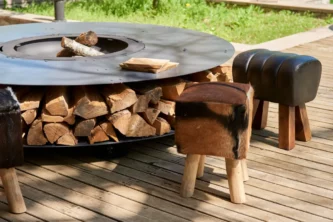
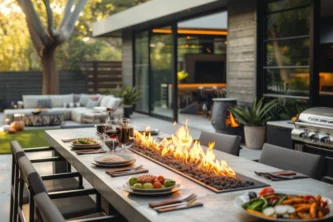
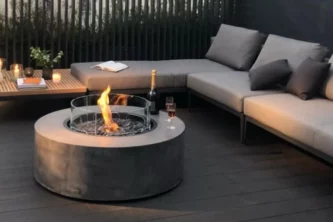




Leave a Reply